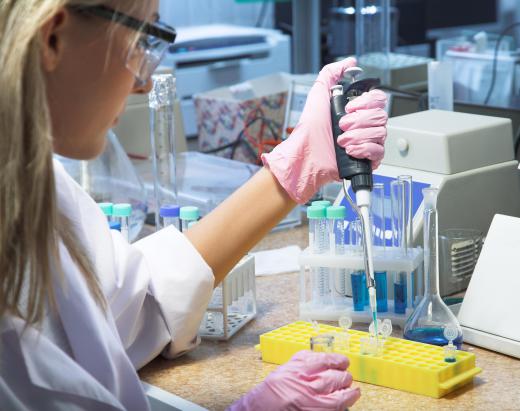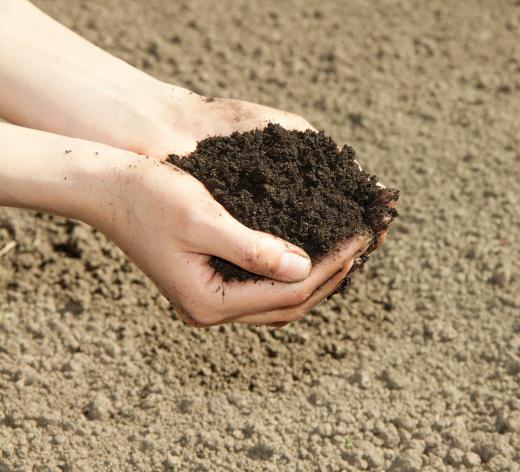What Is Coprecipitation?
 Mary McMahon
Mary McMahon
Coprecipitation is a phenomenon where a solute that would normally remain dissolved in a solution precipitates out on a carrier that forces it to bind together, rather than remaining dispersed. This can occur in nature and in lab settings, and is sometimes actively facilitated, while in other cases it is an undesirable chemical reaction. In environmental remediation in particular, coprecipitation can be an extremely useful tool for sampling, purifying solutions, and cleaning up environmental hazards.
In the process of coprecipitation, chemical similarities between a carrier and a solute allow the two to bind in some way. The binding pulls the solute out of the solution as the carrier forms crystals or other structures. These can potentially be skimmed out or remove in other ways, leaving a purified solution behind. In nature, coprecipitation can occur in waterways, soil, and other environments, and sometimes contributes to the formation of mixed deposits of minerals and other compounds.

There are several ways in which a solute can coprecipitate out of a solution. One is through inclusion, where crystals of a carrier form and the solute finds holes in the crystal matrix to occupy. Solutes can also be subject to occlusion. In occlusions, the carrier completely surrounds the solute, trapping it in the middle of a matrix of crystalline material so it cannot return to the solution. Adsorption, where solutes adhere to the surface of a carrier, can occur as well.

Sometimes this occurs by accident as two compounds react in a lab environment and coprecipitate out of a solution. In other cases, a technician may deliberately trigger the process. A carrier can be introduced to a solution, for example, to remove a solute that cannot be extracted by other means. This is especially common when the concentrations of a solute are extremely low. This can allow companies to extract valuable compounds, and it can also be used in testing of samples where scientists want to identify the lower possible solute concentration.
Sample testing can require the use of coprecipitate to pull out stubborn solutes for evaluation. Environmental contaminants can sometimes be very widely dispersed, making them difficult to identify. Consequently, they may resist other means of extraction, challenging researchers who want to test for them. With the use of coprecipitation, a scientist can accurately and effectively remove a solute of interest for further study. The same carrier agents can also sometimes be used in cleanup, by introducing them to contaminated environments and collecting the resulting aggregates of carriers and contaminants.
AS FEATURED ON:
AS FEATURED ON:












Discussion Comments
@Nefertini - While coprecipitation is helpful in radiochemistry analysis since it is often the only way to separate an element for analysis, during gravimetric analysis it is undesirable to have impurities coprecipitate with the substance being analyzed. Washing the precipitate can reduce coprecipitation during gravimetric analysis.
Another use of coprecipitation is in radiochemistry. To isolate francium from other radioactive substances, for example, scientists coprecipitate it with caesium perchlorate or other caesium salts.
Post your comments